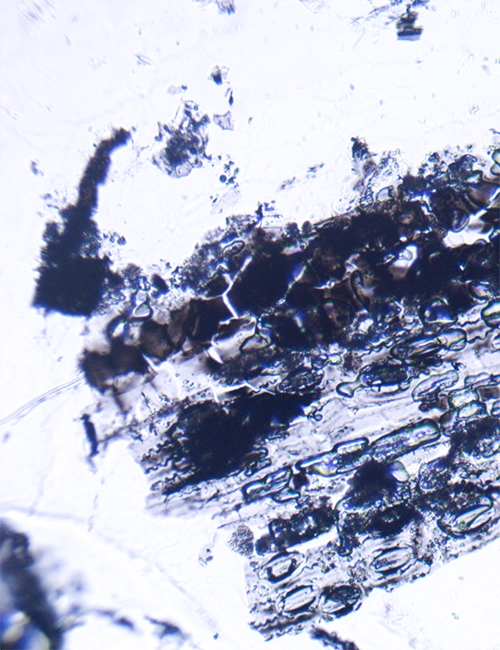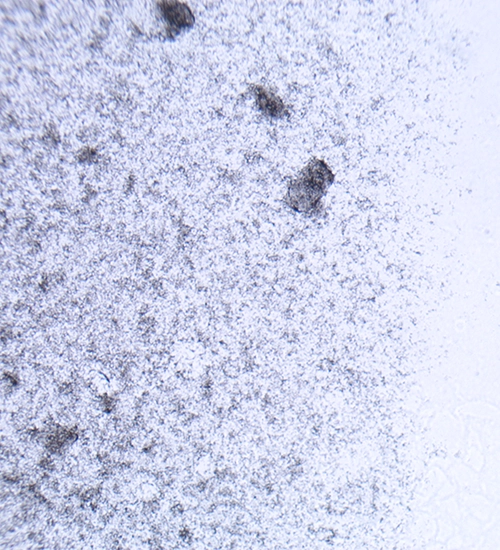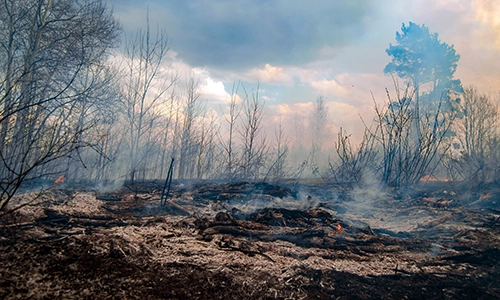Your Trusted Partner for Combustion By-Product Testing and Analysis
Pace® provides a comprehensive array of laboratory testing and analysis services for combustion by-products found in diverse samples. The composition of fire debris is complex, influenced by the materials involved in the fire, the conditions under which combustion occurs, and the presence of fuels or accelerants. Utilizing advanced laboratory equipment and methodologies that comply with industry standards, we support environmental engineers, consultants, and restoration firms in conducting fire investigation testing.
Contact Us Today.

What are Combustion By-Products (CBPs)?
When materials undergo incomplete combustion, they release gasses, airborne solid particles, and liquid particulates known as combustion by-products. These by-products can include soot, char, ash, metal oxides, and other inorganic solids. After a structural fire or wildfire these particulates can settle and pose health risks as well as cause persistent odors.
The residues of a fire, or combustion by-products, consist of gasses and small particles emitted from the incomplete burning of fuels like oil, gas, kerosene, wood, coal, proteins (kitchen fires) and propane. The particulate matter includes condensed soot, char, ash, metal oxides, and inorganic solids, which can contain hazardous substances like heavy metals and polycyclic aromatic hydrocarbons (PAHs) known to cause cancer. These microscopic particles, such as soot, can deeply penetrate the lungs, leading to serious health effects such as premature death, heart attacks, strokes, upper respiratory system irritation, acute bronchitis, and aggravated asthma in children.
What are the Toxic By-Products of Combustion?
Combustion, the chemical process of burning, can produce a range of highly toxic byproducts that pose serious risks to human health and the environment. Among the most concerning are asphyxiant gasses like carbon monoxide (CO) and hydrogen cyanide (HCN), which displace oxygen and can rapidly lead to unconsciousness and death by suffocation. Compounds such as acrolein and phosgene are particularly dangerous due to their reactivity, capable of causing severe chemical burns to soft tissues. Furthermore, the presence of polycyclic aromatic hydrocarbons, recognized as carcinogens, raises the risk of cancer with long-term exposure


Why Test for Combustion
By-Products
Combustion by-products are often invisible, making it difficult to assess their impact. Testing can help identify which surfaces have been affected by smoke residue and determine the effectiveness of any remediation or cleaning efforts.
Techniques for Detection
Methods for identifying combustion by-products encompass a variety of techniques. The choice of method typically hinges on the specific type of combustion by-product and the required analytical detail. Techniques include:
Visual Inspection: This initial step aims to pinpoint areas that may be affected by combustion by-products, focusing on the presence of soot, char, and ash residues.
This technique employs adhesive tape to gather particulate matter from surfaces, maintaining particle integrity and facilitating the analysis of soot particle density and structure.
This method assesses the overall airborne levels of combustion by-products that can have a direct impact on respiratory health.
This approach is used to collect samples from porous materials, such as upholstery, to evaluate contamination levels.
This technique delivers high-resolution images of soot particles, particularly beneficial for examining fine structures like aciniform soot.
Light Microscopy is a technique used to identify and analyze combustion by-products, such as soot (presumptive), ash, and char, in environmental samples. It can be used to determine the source of combustion products and to quantify the concentration of fire-related particles in a given area.

How are Combustion By-Products Regulated?
Currently, there are no established government regulations or certifications for the sampling or analysis of combustion by-products (CBPs), nor is there a widely accepted standard protocol for conducting CBP assessments. However, certain regulations do exist for specific types of combustion processes:
Solid Waste Combustors
The Environmental Protection Agency (EPA) oversees the emissions from solid waste combustors, particularly focusing on products of incomplete combustion (PICs). To promote complete combustion, the EPA mandates the injection of excess oxygen, which effectively eliminates most organic materials and carbon monoxide (CO).
Coal Combustion Residues
Under the Resource Conservation and Recovery Act, coal combustion residues (CCRs) are classified as solid waste. The EPA regulates coal ash to mitigate the risk of contaminants such as mercury, cadmium, and arsenic from affecting air quality, drinking water, and aquatic environments.
Woodstoves
The EPA advises the use of appropriately sized and certified woodstoves, along with adherence to the manufacturer’s guidelines for ignition, maintenance, and extinguishing fires. Additionally, the EPA recommends annual inspections of central air handling systems.
Additional Resources
Need to find a lab that can handle your unique requirements?
Contact us directly or download our list of environmental certifications across our network.